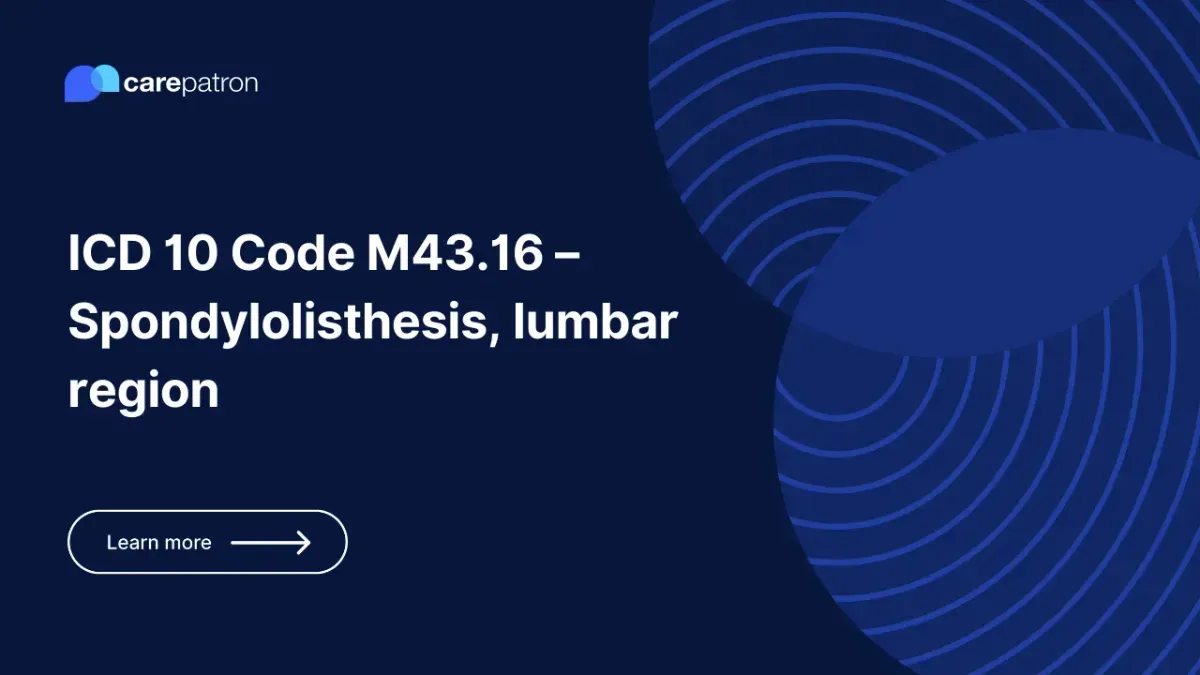
M43.16 - Spondylolisthesis, lumbar region
Learn all about the ICD-10-CM code M43.16 for spondylolisthesis in the lumbar region.
Use Code
EHR and practice management software
Get started for free
*No credit card required
Free
$0/usd
Unlimited clients
Telehealth
1GB of storage
Client portal text
Automated billing and online payments
